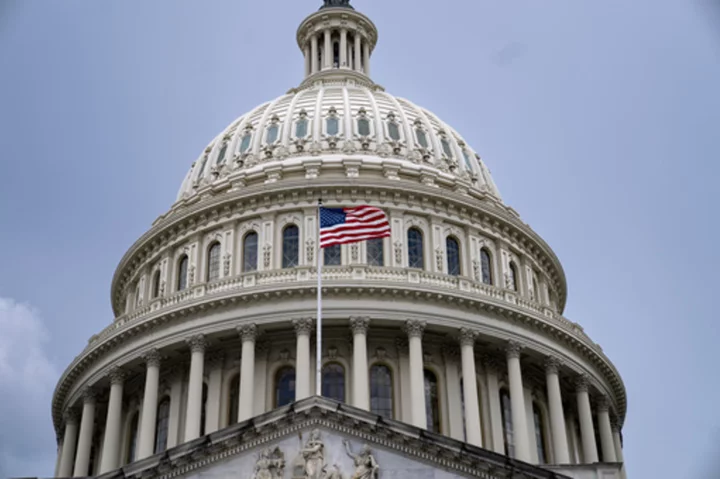WASHINGTON (AP) — The Congressional Budget Office is giving the world a concerning look at the U.S. government's ledgers: ever higher deficits, greater government spending and tax revenues that only begin to increase when existing tax cuts expire.
The nonpartisan agency estimates in its latest 30-year outlook, released Wednesday, that publicly held debt will be equal to a record 181% of American economic activity by 2053. That compares with a projected 98% at the end of this budget year, a sign the government is getting more dependent on debt to pay for Social Security, Medicare, the military, infrastructure and an array of programs that benefit millions of households.
The higher debt load is not all that shocking given the deficit spending of the past two decades. But the CBO figures do offer a bit of comfort in that annual deficits after 2042 are lower than forecasted in the agency's report from last year. This is because the primary borrowing and interest rate costs are lower than what the CBO model year showed then, meaning this fiscal crystal ball can improve as the numbers are refined.
Yet there is a clear warning that lawmakers will be constrained as spending increases after 2026, driven largely by increased healthcare and Social Security costs tied to an aging population and a projected lower labor force participation rate of 60.3% in 2053, from 62.2% now.
Revenues also are expected to increase after 2026. But that is due in large part to increased individual income tax receipts after the tax cuts under President Donald Trump are set to expire after 2025. The problem with the CBO forecast is that the White House wants to preserve some of those tax cuts and the GOP wants to make them largely permanent, so revenues could be lower than what the CBO anticipates.
For 2023, the CBO projects that debt, measured as a percentage of the gross domestic product, this year will be 2 percentage points higher compared the estimate in last year’s long-term budget impact report.
Also this year, the report estimates the U.S. hitting a 4.7% unemployment rate, though the current jobless rate sits at 3.7%.
On the same day as the report's release, President Joe Biden traveled to Chicago to deliver a speech about the nation's economic growth after the once-in-a-generation pandemic.
“The U.S. has had the highest economic growth among the world’s leading economies since the pandemic,” Biden said. “We’ve added over 13 million jobs, more jobs in two years than any president has added in a four-year term," he said.
While the risk of a fiscal crisis in the near term appears to be low, the report said another bout of persistently high inflation, for instance, could affect the government's long-term position.
The nation's fiscal health became the focal point of debate during the latest round of debt ceiling negotiations.
While Republicans called for a series of massive cuts as part of an agreement to lift the debt ceiling, the White House and Democrats said the debt should not be tied to the issue, threatening an unprecedented national default.
Ultimately, the parties agreed to suspend the debt limit until 2025 in exchange for restrictions on spending for the next two years, imposing new work requirements for older adults receiving food aid and greenlighting a natural gas line that many Democrats oppose.
___
Associated Press writer Josh Boak in Chicago contributed to this report.

